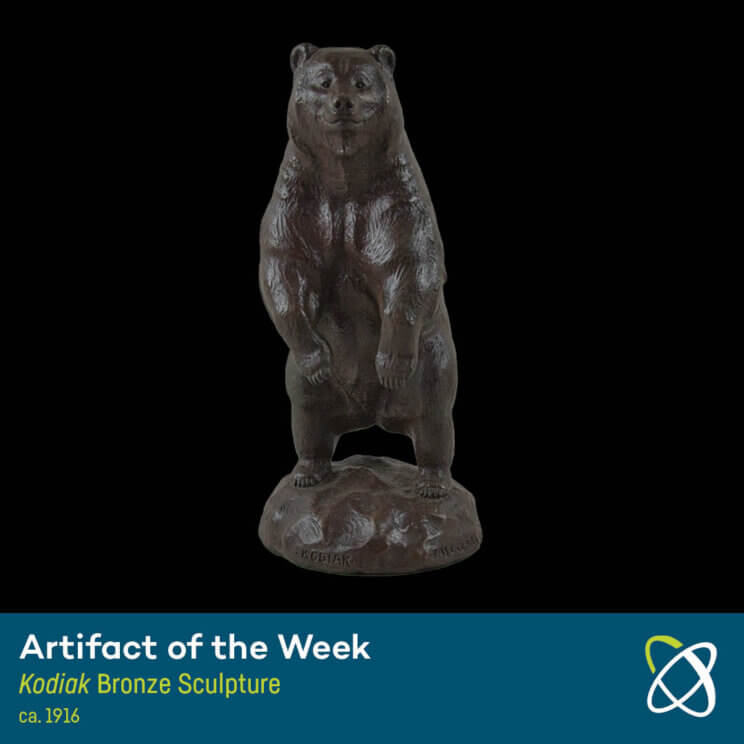Kodiak Bronze Sculpture – ca. 1916
This happy Kodiak bear sculpture was made by James Lippitt Clark, a well-known taxidermist, photographer, sculptor, and explorer. He was best known for his sculptures of big game animals, but he also created a few of North American animals. An expert taxidermist, Clark’s talent with anatomy is clearly shown in the detail of his bronze sculptures.

It is amazing to think that James Lippitt Clark had time to create numerous bronze animal sculptures when you look at his long career and many achievements.
Clark studied at the Rhode Island School of Design and then apprenticed at the Gorham Silver Factory learning many of the skills that he would use throughout his career. In 1902, Clark was hired by the American Museum of Natural History to create animal sculptures for the museum. He sketched animals from life at the Central Park Zoo and Bronx Zoo, then produced realistic, natural displays of taxidermy animals using a new method which involved sculpting animal bodies, creating mannequins, and then adding skin. In 1908, he left AMNH to embark on an expedition to Africa to take photographs for Collier’s Weekly. While in Africa, Clark produced the first film to record African wildlife, but also hunted for specimens which he brought back for American museums. This was the first trip of many that he regularly made to Africa, and Asia, to collect zoological specimens.
In 1923 Clark returned to work at AMNH, leading projects to create the diorama halls, the Asiatic Hall, the African Hall, the Birds of the World hall, and the Ocean Life halls. He was responsible for some of the most significant animal group displays which grace the New York museum. Clark personally mounted the African lions and white rhinos on display in the Hall of African Mammals. In 1935, Clark became the museum’s Director of Arts, Preparation and Installation until his retirement from AMNH in 1949.
Clark was an innovator in taxidermy specimen preparation and display, changing the way museums create dioramas of animal groups. The lifelike quality and accuracy of his taxidermy specimens have earned both him and the American Museum of Natural History worldwide recognition. From studying animals in life, both in zoos and on expeditions worldwide to observe them in their natural habitats, Clark gained a thorough understand of animal anatomy, characteristics, and behavior. His long career preparing animals mounts and specimens also extended into sculpture, and he created bronzes of wildlife with that same lifelike quality and accuracy that earned him such distinction.
See more Artifacts of the Week
Artifact of the Month Video Series
Connect with curiosity!










